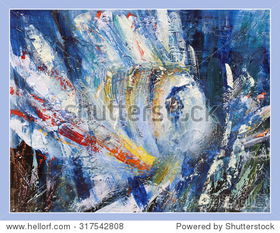Content:
Angling for common carp, also known as grass carp or mirror carp, is a popular pastime among anglers worldwide. These resilient fish are not only sought after for their fighting spirit but also for their delectable meat. Whether you're a seasoned angler or a beginner looking to hone your skills, mastering the art of catching common carp requires a blend of patience, knowledge, and the right techniques. In this article, we'll delve into the essential tips and tricks to help you hook into these majestic creatures.
Choosing the Right Equipment
The first step in successful carp fishing is to ensure you have the right equipment. Here are some key items to consider:
Rod and Reel: A medium-heavy action rod with a length of 10-12 feet is ideal for carp fishing. Pair it with a quality reel that can handle the weight of the fish and has a smooth drag system.
Line: Use a strong, abrasion-resistant line such as braid or fluorocarbon. Carp are notorious for their sharp teeth, so a line that can withstand a lot of wear and tear is crucial.
Hook: A size 6 to 10 hook is typically used for common carp. The hook size can vary depending on the bait you choose, but a good rule of thumb is to match the hook size to the bait's size.
Leader: A 6- to 12-inch leader made of the same material as your main line is necessary to prevent the carp from detecting your line.
Bait: Carp are opportunistic feeders and will eat a variety of baits. Some popular options include boilies, pellets, corn, bread, and even bread paste.
Understanding Carp Behavior
Before you start fishing, it's important to understand the behavior of common carp. Here are some key points to consider:
Feeding Patterns: Carp are most active during dawn and dusk. This is when they are most likely to feed. However, they can be caught at any time of the day if they are in a feeding mood.
Water Temperature: Carp are cold-blooded and are most active when the water temperature is between 60°F and 75°F (15°C to 24°C). They tend to slow down and become less active when the water is too warm or too cold.
Location: Carp are bottom feeders and often found in shallow waters, near reeds, or in areas with a lot of vegetation. Look for areas with structure, such as logs, rocks, or fallen trees, as these can provide hiding spots for carp.
The Art of Carp Baiting
Baiting is a critical aspect of carp fishing. Here are some tips to help you present your bait effectively:
Boilies: Boilies are one of the most popular baits for carp. To ensure they sink properly, tie them to your line with a swivel or a bait stopper. You can also use a baiting needle to create a paste out of your boilies and apply it to your hook.
Pellets: Pellets are another great option. You can either hook them directly or use a baiting needle to apply them to your hook.
Natural Baits: Natural baits like corn, bread, or worms can be effective, especially in areas where the carp are accustomed to eating these types of foods. Ensure your bait is fresh and free from any odors that might deter the fish.
Presentation: The key to successful carp fishing is to present your bait in a way that mimics the natural movement of prey. A slow, steady retrieve or a gentle twitch can be effective.
Casting and Setting the Hook
Once you've chosen your bait and prepared your rig, it's time to cast and set the hook:
Casting: When casting, ensure you are casting directly over the area where you expect the carp to be. Avoid casting too hard, as this can scare the fish away.
Setting the Hook: When a carp takes your bait, be patient. Allow the fish to take the bait and then gently set the hook. A sudden or aggressive strike can spook the fish.

Patience and Persistence
Carp fishing requires a lot of patience. It's not uncommon to spend hours without a bite. However, persistence pays off. Keep your eyes on the water and be ready to act quickly when a carp takes your bait.
In conclusion, mastering the art of catching common carp involves a combination of the right equipment, understanding the fish's behavior, effective baiting techniques, and a lot of patience. By following these tips and tricks, you'll be well on your way to becoming a successful carp angler. Happy fishing!












